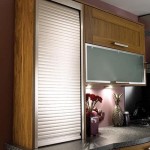Essential Aspects of Containers to Organize Kitchen Cabinets
Containers to organize kitchen cabinets are essential for maximizing storage space, maintaining order, and enhancing the functionality of your kitchen. Understanding the crucial aspects of these containers is paramount to selecting the most suitable ones for your needs. ### Material Durability The material of the containers greatly influences their longevity. Opt for containers made of durable materials such as plastic, glass, or metal, which can withstand daily use and regular cleaning. Plastic containers are lightweight and inexpensive, while glass containers offer a clear view of contents but may be prone to breakage. Metal containers provide the highest durability but can be heavier and more expensive. ### Size and Shape Containers come in various sizes and shapes to accommodate different types of items. Choose containers that fit the size of the items you intend to store. Consider the height of your cabinets and the available shelf space to determine the maximum height and depth of the containers. Round containers can be ideal for storing bulky items, while rectangular or square containers are suitable for smaller items and maximizing shelf space. ### Stackability and Interlocking Stackable containers allow you to maximize vertical space, especially in upper cabinets. Look for containers with interlocking lids or handles that allow them to be stacked securely, preventing spills or messes. Interlocking lids create a seal that keeps contents fresh and prevents odors from escaping. ### Transparency and Labeling Transparent containers provide easy visibility of their contents, making it quick and easy to locate the items you need. If you opt for opaque containers, consider labeling them clearly. Proper labeling can significantly improve the organization of your cabinets and help you find what you need promptly. ### Airtightness and Moisture Resistance Airtight and moisture-resistant containers are essential for preserving the freshness of food items. If you store dry goods such as flour, sugar, or spices, choose containers with tight-fitting lids that prevent air and moisture from entering. This is crucial to maintain the quality and shelf life of your ingredients. ### Cleaning and Maintenance Containers should be easy to clean and maintain to ensure hygiene in your kitchen. Choose containers that are dishwasher safe or can be easily wiped clean with a damp cloth. Regular cleaning will prevent the accumulation of food residue or stains, keeping your containers looking fresh and hygienic. ### Conclusion These essential aspects of containers to organize kitchen cabinets will guide you in selecting the most appropriate containers for your specific needs and preferences. By considering factors such as durability, size, stackability, transparency, airtightness, and ease of cleaning, you can ensure an organized, efficient, and aesthetically pleasing kitchen.
How To Organize Kitchen Cabinets

7 Interior Organizers That Will Improve The Utility Of Your Cabinets Residential S

How To Organize Kitchen Cabinets Clean And Scentsible

How To Organize Kitchen Cabinets Polished Habitat

How To Organize Your Kitchen Cabinets Step By Project The Container

40 Kitchen Organization Ideas To Simplify Your Space

Kitchen Cabinet Organizers 11 Free Diy Ideas Bob Vila

Kitchen Storage Cabinets The Best Pot Rack And Cabinet Organizers

60 Clever Cabinet Organization Tips To Double Your Storage 2024

30 Kitchen Cabinet Add Ons You Can Diy Family Handyman
Related Posts








